
A complete guide to the best whale watching locations in the world, including where and when to go and what to take. Take your first step towards planning a trip of a lifetime!
Embarking on a whale watching tour not only provides the thrill of seeing these magnificent creatures up close, but also offers the chance to appreciate the stunning natural beauty of the world’s landscapes and seascapes.
Most whale populations are migratory, and therefore many whale watching destinations are best visited at certain times of the year.

This guide not only suggests some of the best whale watching destinations in the world, but also the best times to visit and the types of whales you might expect to see in each location.
Whale Watching Guide Index
Related Pages On Active Wild
- Whale species guide: Every species of whale, pictures, stats and facts
- Dolphin species guide: Every species of whale, pictures, stats and facts
Whale Watching In Antarctica
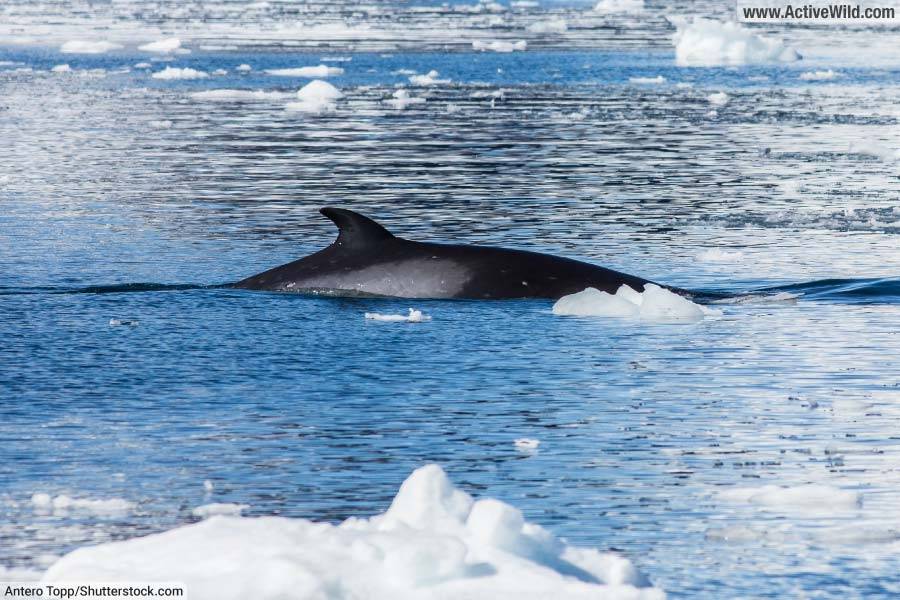
Whale watching in Antarctica is an unparalleled adventure that combines the stark beauty of the world’s southernmost continent with the chance to observe whales in their natural habitat.
The Antarctic waters, rich in marine life due to the abundant krill, attract numerous whale species, making it a prime destination for cetacean enthusiasts.
The best time to see whales in Antarctica is during the Southern Hemisphere’s summer, which runs from November to March, with February and March being the optimal time for whale watching visits.
During these months, the ice melts significantly, allowing ships to navigate more freely, the weather is milder, and the whales are more active and visible as they feed on the abundant krill.
The Antarctic Peninsula is the most popular and accessible area for whale watching, offering close encounters with various species. Other noteworthy locations include the waters around South Georgia and the South Sandwich Islands, where the marine biodiversity is stunning.
Visitors can expect to see several whale species in these nutrient-rich waters, including humpback whales, minke whales, blue whales, and killer whales / orcas. You also have a good chance of seeing Antarctic seals, dolphins and birds.
Some tour operators offer research cruises in which tourists can travel with scientists and assist with whale research.
Whale Species:
- Humpback whale
- Minke whale
- Blue whale
- Killer whale / orca
Top Locations:
- The Antarctic Peninsula
- South Georgia
- The South Sandwich Islands
Best Time of Year to Visit:
- Summer months (in particular, February to March)
Whale Watching In Argentina
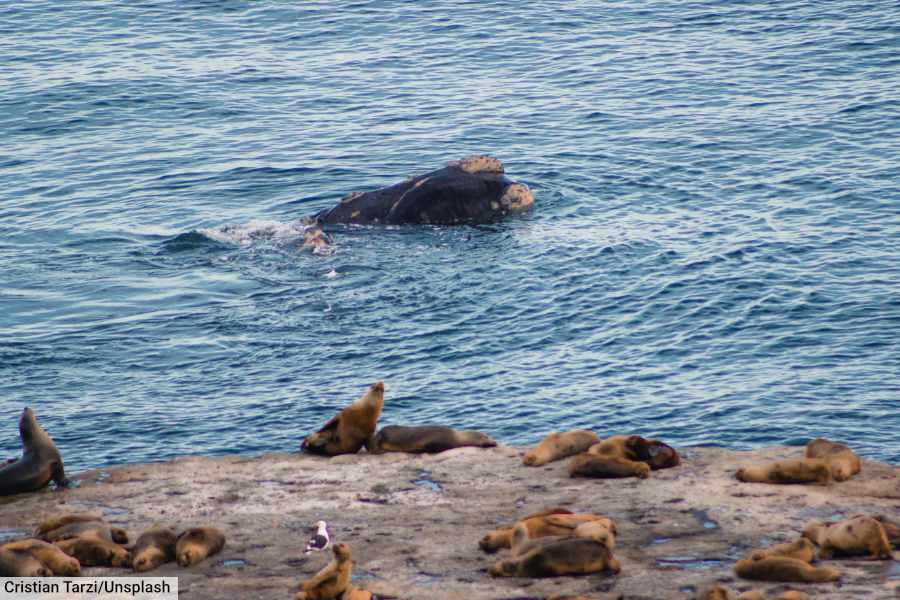
Argentina’s coastline, especially around the Patagonian region, provides a number of prime spots for observing a variety of whale species, making it a popular destination for marine wildlife enthusiasts.
The best time to embark on a whale watching adventure in Argentina is from June to December, when Southern Right Whales migrate to the warmer waters off the coast of Patagonia for breeding and calving.
The coastal town of Puerto Madryn and the nearby Valdés Peninsula are among the best locations for whale watching, offering close encounters with these majestic animals. On the peninsula itself, the region around Puerto Pirámides serves as a prime launching point for boat tours.
Visitors to these areas may also catch glimpses of other cetacean species such as Orcas, especially around Punta Norte during March and April, where they are known for their unique hunting technique of beaching themselves to catch sea lions. Minke and Blue whales may also be spotted, though less frequently.
Whale Species:
- Southern Right Whales
- Orcas
- Minke Whales
- Blue Whales
Top Locations:
- Puerto Madryn
- Valdés Peninsula
- Puerto Pirámides (town on the Valdés Peninsula)
Best Time of Year to Visit:
- June to December
Whale Watching In Australia
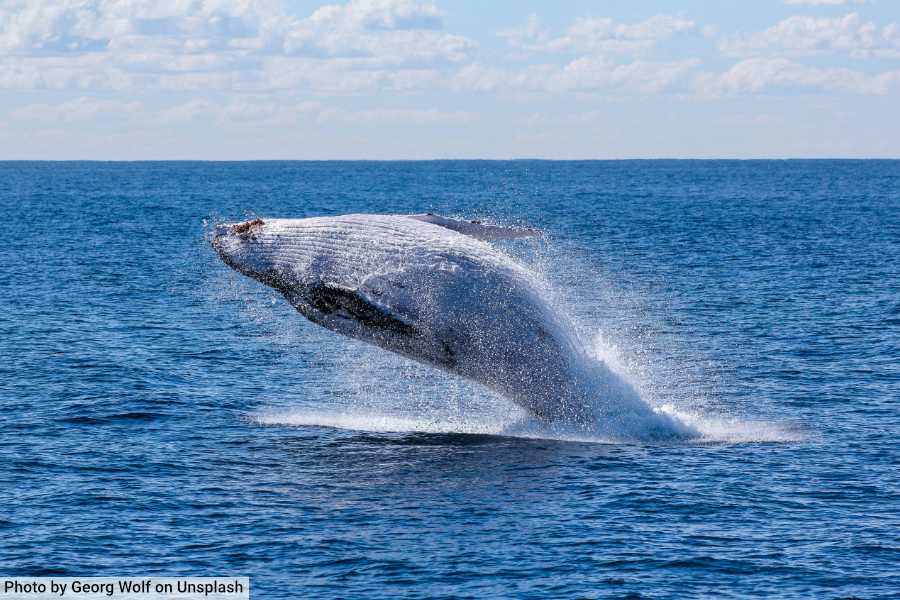
Whale watching in Australia can be extremely rewarding, thanks to the country’s vast coastline, which offers numerous spots to witness these magnificent marine mammals.
Australia’s whale watching season varies across the country, generally running from May to November when whales migrate from the Antarctic to the warmer waters to breed and give birth.
The east coast of Australia, particularly around the areas of Hervey Bay, the Gold Coast, and Sydney, provides fantastic opportunities to see Humpback Whales and Southern Right Whales. From June to November, some tour operators even guarantee seeing a whale!
Hervey Bay is often referred to as the whale watching capital of Australia, offering up-close encounters with humpbacks.
On the west coast, the Ningaloo Reef near Exmouth and the waters around Albany are prime spots for observing the marine mammals.
Besides humpbacks and Southern Right Whales, visitors might also spot Minke Whales and the occasional Blue Whale, especially off the coast of Perth and in the Kimberley region.
Whale Species:
- Humpback Whales
- Southern Right Whales
- Minke Whales
- Blue Whales
Top Locations:
- Hervey Bay, Gold Coast, Sydney (East Coast)
- Ningaloo Reef, Albany, Perth (West Coast)
- Great Barrier Reef (for Dwarf Minke Whales)
- Hobart / east coast of Tasmania
Best Time of Year to Visit:
- June to October for the majority of the coast
Whale Watching In The Azores
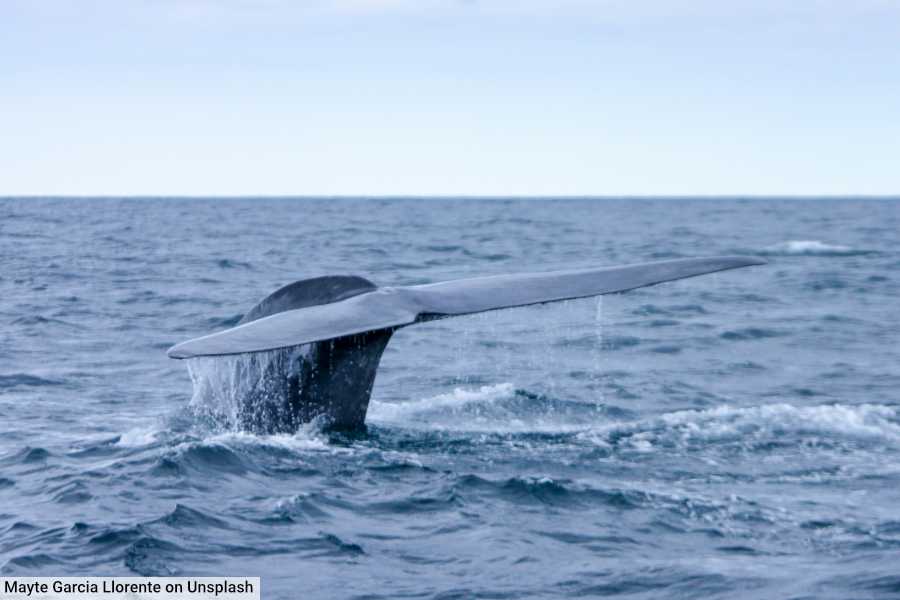
Whale watching in the Azores, a stunning archipelago in the middle of the Atlantic Ocean, is an unforgettable experience due to its position on the migration routes of various whale species. The Portuguese islands are renowned for being one of the world’s premier destinations for encountering these magnificent creatures in their natural habitat.
The best time to visit the Azores for whale watching is from April to October, with peak sightings occurring in the spring and summer months. This period coincides with the migration patterns of many whale species, providing excellent opportunities for observation.
The islands of Pico, São Miguel, and Faial are particularly famous for their whale watching tours. Pico, in particular, is often considered the heart of whale watching in the Azores, offering sightings of sperm whales, the most commonly seen species, along with blue whales, fin whales, and humpbacks as they pass through the deep waters surrounding the island.
In addition to these larger species, visitors may also encounter various types of dolphins, including bottlenose and Atlantic spotted dolphins, making every trip to the ocean a unique adventure.
Whale Species:
- Sperm Whales
- Blue Whales
- Fin Whales
- Humpback Whales
- Bottlenose Dolphins
- Atlantic Spotted Dolphins
Top Locations:
- Pico
- São Miguel
- Faial
Best Time of Year to Visit:
- April to October, with the highest concentration of sightings in the spring and summer months.
Whale Watching In Canada
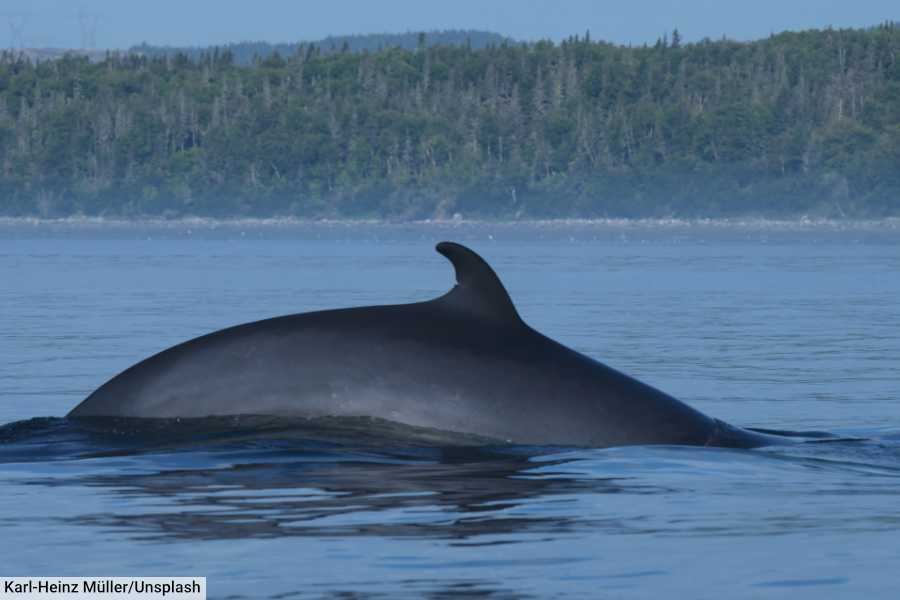
Whale watching in Canada is a captivating experience, offering the chance to see a diverse range of cetaceans across the country’s extensive coastlines. From the Pacific waters of British Columbia to the Atlantic shores of the Maritime provinces, Canada provides unparalleled opportunities for whale watching enthusiasts.
The prime whale watching season varies by region. In British Columbia, the best time is from April to September, when orcas, humpback whales, and gray whales are frequently sighted.
The Bay of Fundy in New Brunswick and Nova Scotia, renowned for having the highest tides in the world, offers excellent sightings of humpback whales, minke whales, and the rare North Atlantic right whale from June to September.
In the province of Quebec, particularly in the St. Lawrence River area, belugas, blue whales, and minke whales can be seen from May through October.
Newfoundland and Labrador boast sightings of orcas, pilot and minke whales, humpbacks and sperm whales, particularly during the summer months.
Whale Species:
- Orcas
- Humpback Whales
- Minke Whales
- Gray Whales
- Belugas
- Blue Whales
- Sperm Whales
Top Locations:
- British Columbia (Pacific coast)
- Bay of Fundy, New Brunswick and Nova Scotia (Atlantic coast)
- St. Lawrence River, Quebec
- Newfoundland and Labrador
Best Time of Year to Visit:
- Varies by region, mainly late spring to early fall
Whale Watching In Chile
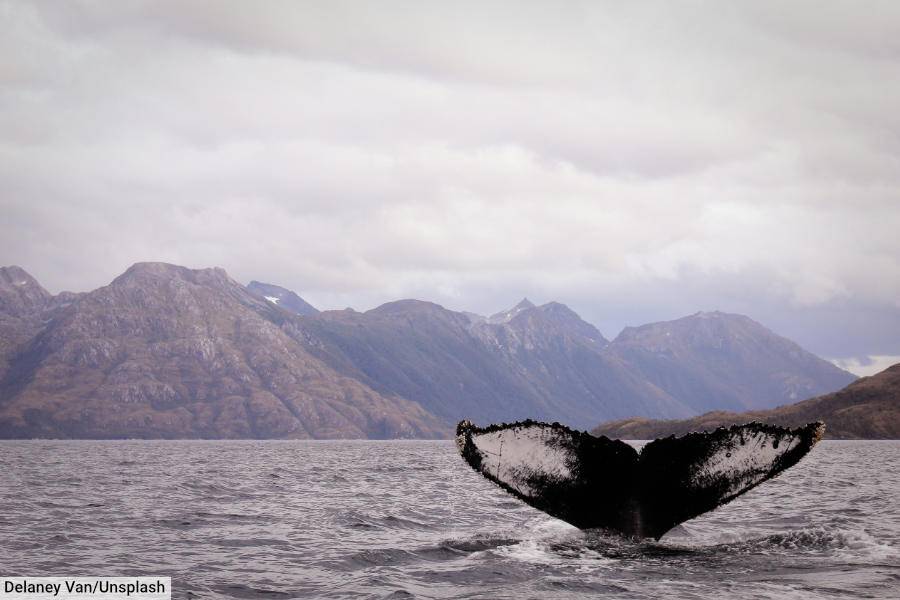
Chile, with its extensive coastline along the Pacific Ocean, is a prime destination for whale watching. The country’s diverse marine environments, from the cold waters of the southern fjords to the warmer northern seas, provide rich feeding grounds for whales.
The best time for whale watching in Chile varies by region. In the southern regions, including Patagonia and the Magellan Strait, the peak season is during the Southern Hemisphere’s summer months, from December to March. This period is ideal for spotting humpback whales, which migrate to these food-rich waters.
Further north, from Chiloé Island to Arica, blue whales, fin whales and other cetaceans may be spotted year-round, with peak sightings of blue whales reported from December to March. Bear in mind that these animals are rare, and sightings are not guaranteed.
Other cetaceans that may be spotted during a whale watching trip in Chile include numerous species of dolphins.
Whale Species:
- Humpback Whales
- Blue Whales
- Minke Whales
- Sperm Whales
- Orcas
- Fin Whales
- Sei Whales
Top Locations:
- Patagonia and the Magellan Strait
- Chiloé Island
- Atacama Desert coast
- Juan Fernández Islands
- Francisco Coloane Marine Park
Best Time of Year to Visit:
- January to April
Whale Watching In Dominica
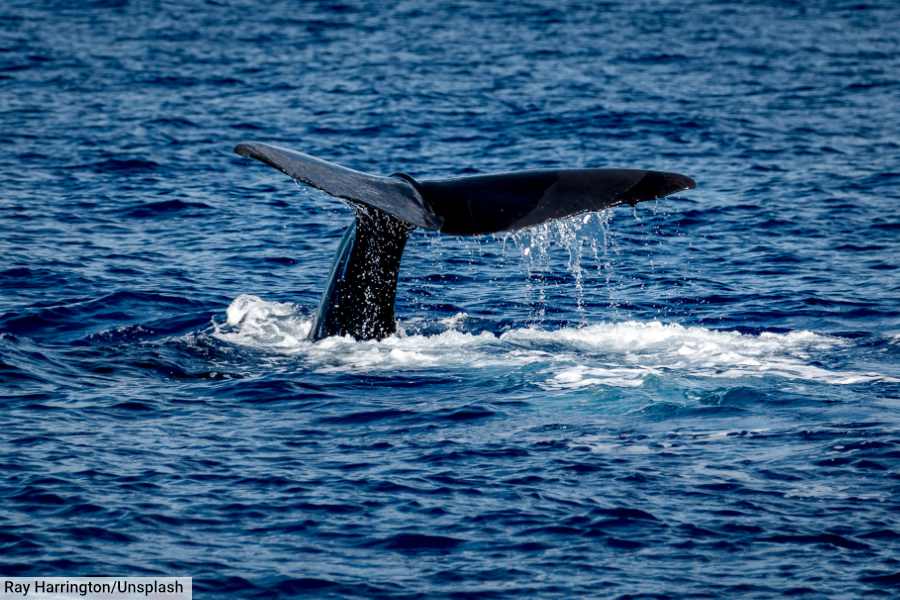
Dominica, nestled in the heart of the Caribbean, offers a unique and intimate whale watching experience, distinguishing itself as a haven for nature lovers and marine enthusiasts alike. The island’s deep coastal waters serve as a year-round home to a diverse range of cetacean species, making it one of the few places in the world where sperm whales can be observed year-round.
The prime time for whale watching in Dominica is from November to March, during which visitors have the opportunity to see not only the resident sperm whales but also humpback whales and a variety of dolphin species.
The west coast of Dominica, with its calm and deep waters, provides the perfect backdrop for these encounters. The town of Roseau, in particular, acts as a gateway for whale watching tours, offering guided excursions that promise not only sightings of these majestic animals but also the chance to learn about their behaviors and the conservation efforts in place to protect them.
Tours typically venture out into the Caribbean Sea, where the deep waters just a few miles off the coast are teeming with life, offering a rare opportunity to witness these magnificent creatures in their natural habitat.
Whale Species:
- Sperm Whales
- Humpback Whales
- Various Dolphin Species
Top Locations:
- West Coast of Dominica
- Roseau
Best Time of Year to Visit:
- November to March
Whale Watching In Iceland
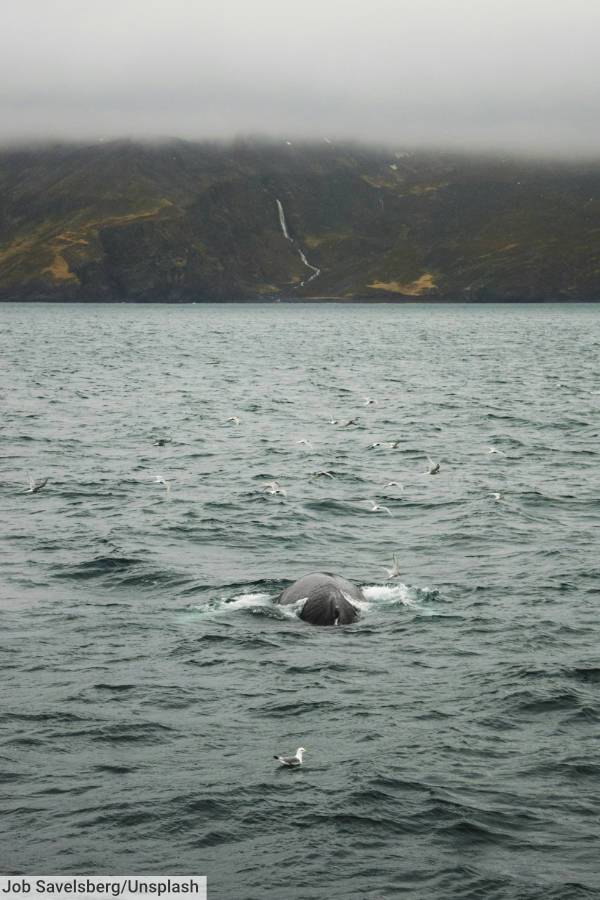
Iceland, with its dramatic coastlines and nutrient-rich waters, is a premier destination for whale watching. The country’s unique geographical location makes it an ideal spot for observing a wide variety of marine life, particularly cetaceans.
Whale watching tours are available from several harbors around Iceland, offering visitors the chance to encounter these magnificent creatures in their natural habitat.
The best time for whale watching in Iceland stretches from April to September, during the summer months when the waters are teeming with life and the weather is more conducive to sea excursions. During this period, visitors have the opportunity to see minke whales, humpback whales, blue whales, and even orcas, among others.
Húsavík, often referred to as the “Whale Watching Capital of Iceland,” and the capital city, Reykjavík, are among the most popular departure points for whale watching tours.
The Skjálfandi Bay near Húsavík provides particularly fertile waters for whale sightings. Reykjavík, on the other hand, offers the convenience of proximity to other tourist attractions in addition to whale watching opportunities.
Located in the north near the Eyjafjörður fjord, Akureyri, is another excellent location for whale watching. The fjord’s sheltered waters are frequented by whales, especially in the summer.
Snæfellsnes Peninsula is an area in the west of Iceland known for its diverse marine life. It is particularly good for spotting orcas during the winter and spring months.
Whale Species:
- Minke Whales
- Humpback Whales
- Blue Whales
- Orcas
Top Locations:
- Húsavík
- Reykjavík
- Akureyri
- Snæfellsnes Peninsula
Best Time of Year to Visit:
- April to September
Whale Watching In Mexico
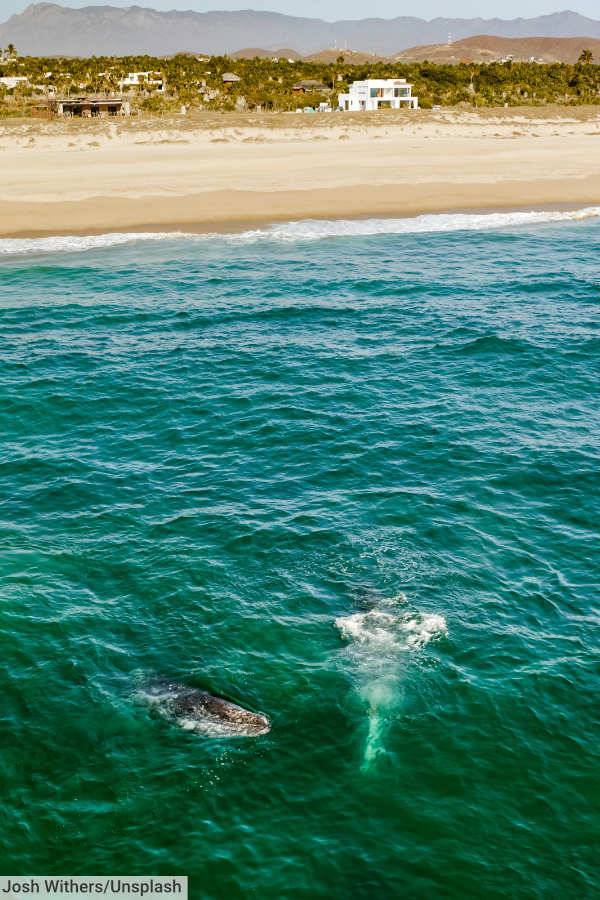
Mexico’s diverse coastal environments offer some of the best whale watching opportunities in the world, particularly along the Baja California Peninsula. The warm waters here are a winter haven for whales, making it an ideal destination for those hoping to catch a glimpse of these majestic marine mammals.
The main whale watching season in Mexico runs from December to the end of March, coinciding with the migration of whales from the Arctic to the warmer breeding grounds off the Baja Peninsula.
San Ignacio Lagoon, Magdalena Bay, and the waters around the Los Cabos area are particularly famous for gray whale sightings. The area is a hot-spot for these marine mammals, and the warm lagoons of Baja Mexico, where gray whales come to calve and nurse their young, offer a chance for close encounters.
In addition to gray whales, the Gulf of California / Sea of Cortez is renowned for its biodiversity, providing opportunities to see blue whales—the largest animals on Earth—as well as humpbacks and orcas.
Whale Species:
- Gray Whales
- Humpback Whales
- Blue Whales
- Orcas
Top Locations:
- San Ignacio Lagoon
- Magdalena Bay
- Los Cabos
- Gulf of California / Sea of Cortez
Best Time of Year to Visit:
- December to April
Whale Watching In New Zealand
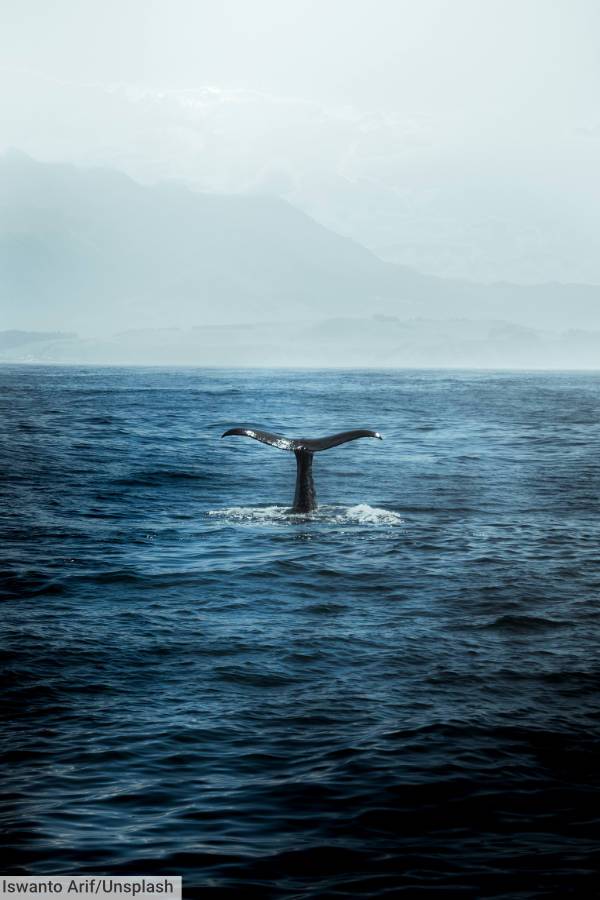
New Zealand offers one of the most spectacular settings for whale watching, thanks to its diverse marine ecosystems and strategic location. With both the North and South Islands surrounded by rich oceanic waters, visitors have the chance to encounter a variety of cetacean species throughout the year.
The coastal town of Kaikōura, on the South Island, is particularly renowned for its whale watching opportunities, offering year-round sightings of sperm whales, the area’s most famous residents.
In this area you might also see migrating humpback whales, southern right whales and pilot whales in winter and spring (June to August), and orcas and blue whales in summer (December to March).
In addition to Kaikōura, the Hauraki Gulf near Auckland on the North Island provides excellent opportunities to see Bryde’s whales and common dolphins, especially from September to March. The Bay of Islands is another notable spot where visitors might see bottlenose dolphins and occasionally orcas.
Whale Species:
- Sperm Whales
- Humpback Whales
- Orcas
- Bryde’s Whales
- Common Dolphins
- Bottlenose Dolphins
Top Locations:
- Kaikōura
- Hauraki Gulf
- Bay of Islands
Best Time of Year to Visit:
- Year-round for Sperm Whales in Kaikōura
- June to August for Humpback Whales & other species
Whale Watching In Norway
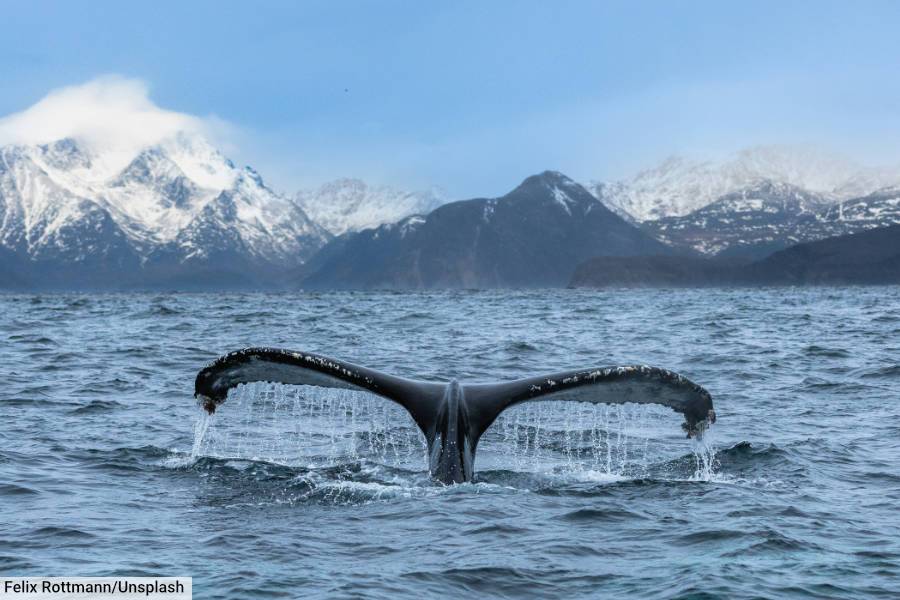
Norway offers some of the most extraordinary whale watching experiences in the world, particularly in its northern regions, where the cold Arctic waters are teeming with life. The country’s dramatic fjords and coastal waters serve as a backdrop for sightings of a variety of whale species, attracting enthusiasts and nature lovers from around the globe.
The best time to go whale watching in Norway is during the winter months, from late October to January, when large numbers of orcas, humpback whales and fin whales migrate to the Norwegian coast to feed on the abundant herring. This spectacular natural event occurs in the waters around Tromsø and the Lofoten Islands, which are considered among the best locations for whale watching in Norway.
Aside from orcas and humpbacks, visitors may also encounter fin whales, minke whales, and sometimes even the majestic blue whale. The experience of watching these magnificent creatures in the stunning Arctic environment, with the northern lights as a possible backdrop, makes whale watching in Norway a truly unique and unforgettable adventure.
Whale Species:
- Orcas
- Humpback Whales
- Fin Whales
- Minke Whales
- Blue Whales
Top Locations:
- Tromsø
- Vesterålen
- Lofoten Islands
Best Time of Year to Visit:
- Late October to January
Whale Watching In South Africa
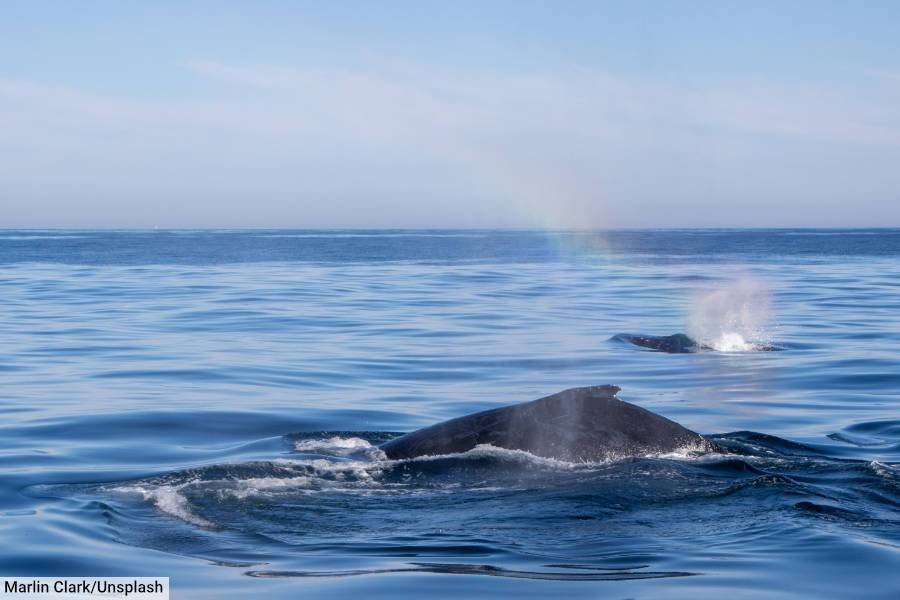
Whale watching in South Africa is an awe-inspiring experience, with the country’s coastline offering some of the best vantage points in the world to observe these majestic creatures. The whale watching season in South Africa runs from June to October, when Southern Right Whales come to the sheltered bays to mate and give birth to their calves.
Hermanus, in particular, is world-renowned for its whale watching opportunities and even hosts an annual whale festival in September. Hotels in the area specialize in whale-based tourism, and you might even be able to view a passing whale from your hotel room.
Other species that visitors might see include the Humpback Whale, which migrates through South African waters between May and December, and the Bryde’s Whale, which can be seen year-round.
The Garden Route, stretching from Mossel Bay to St Francis, also offers spectacular whale watching, with Plettenberg Bay and Knysna being notable spots. Furthermore, the waters off the Wild Coast and KwaZulu-Natal are known for their sightings of Humpback Whales during their migration.
Whale Species:
- Southern Right Whales
- Humpback Whales
- Bryde’s Whales
- Top Locations:
- Hermanus
- Garden Route (Plettenberg Bay, Knysna)
- Wild Coast
- KwaZulu-Natal
Best Time of Year to Visit:
- June to October for the best overall whale watching
Whale Watching In Sri Lanka
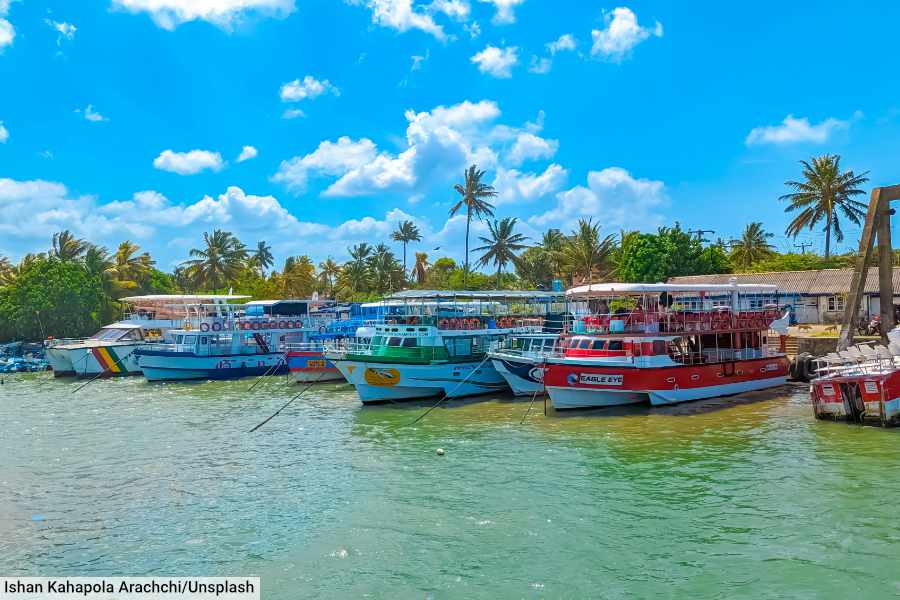
Whale watching in Sri Lanka has become increasingly popular, thanks to the island’s perfect positioning in the Indian Ocean. The waters around Sri Lanka are home to an impressive diversity of cetaceans, making it one of the best places in the world for whale watching.
The prime time for whale watching in Sri Lanka is from December to April, when blue whales, the largest animals on the planet, along with sperm whales, make their presence known off the country’s southern and eastern coasts.
Mirissa, on the southern coast, is the most famous whale watching spot in Sri Lanka, offering regular sightings of blue whales, sperm whales, and occasionally orcas (killer whales).
On the west coast, Kalpitiya offers whale watchers the chance to see a sperm whale or a blue whale.
Trincomalee, on the eastern coast, is another key whale-watching destination, particularly from April to September, for those looking to catch a glimpse of these sea giants in a more secluded setting.
Whale Species:
- Blue Whales
- Sperm Whales
- Orcas (Killer Whales)
- Bryde’s Whales
- Dolphins (various species)
Top Locations:
- Mirissa (South Coast)
- Kalpitiya (West Coast)
- Trincomalee (East Coast)
Best Time of Year to Visit:
- November to April
- May to September for the East Coast (Trincomalee)
Whale Watching In The USA
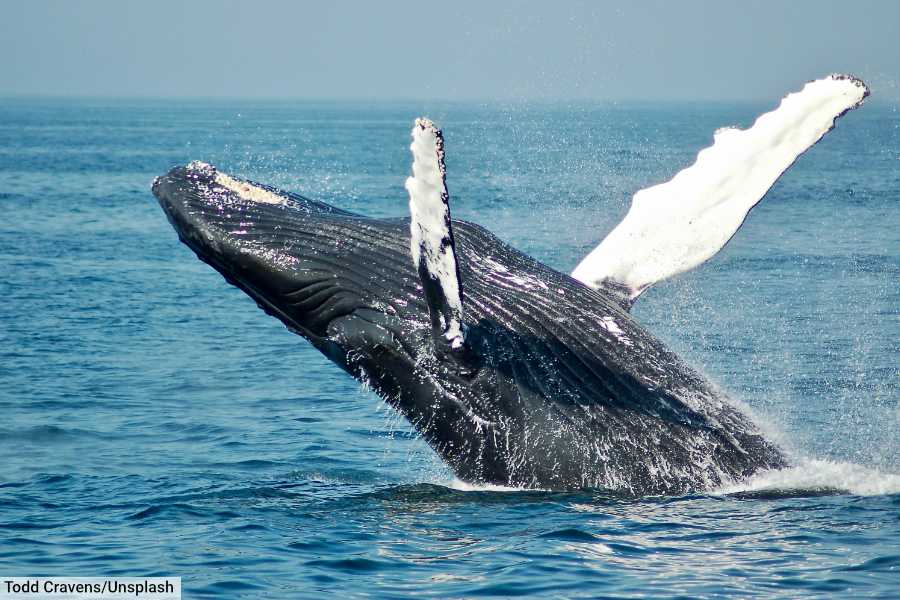
There are many excellent whale watching destinations in the United States across both the Pacific and Atlantic coastlines.
On the Pacific Coast, California is a hotspot for whale watching, with gray whales during their migration from December to May, blue whales in the summer months, and humpbacks almost year-round.
Further north, the waters of Alaska are renowned for their summer sightings of orcas, humpbacks, and gray whales.
On the Atlantic side, the New England area, particularly Cape Cod and the Gulf of Maine, is famous for whale watching from April to October, with frequent sightings of humpback whales, minke whales, and the critically endangered North Atlantic right whale.
The warmer waters of the Southeast coast, including Florida and Georgia, provide winter and early spring opportunities to see North Atlantic right whales, particularly around their calving areas.
Whale watching tours in the U.S. range from short coastal trips to full-day excursions, offering something for every interest and schedule. Whether aboard a large, stable vessel with educational resources or a more intimate zodiac expedition, visitors are treated to an unforgettable experience of witnessing these magnificent creatures up close.
Depending on your location, you may also see other iconic North American animals, such as bald eagles, seals, sealions, pelicans and other seabirds.
Whale Species:
- Gray Whales
- Blue Whales
- Humpback Whales
- Orcas
- Minke Whales
- North Atlantic Right Whale
Top Locations:
- Maui, Hawaii – Famous for humpback whale sightings during the winter months.
- Monterey Bay, California – Offers year-round whale watching with species like blue whales, humpbacks, and gray whales.
- San Juan Islands, Washington – Known for orca sightings, especially during the summer.
- Gloucester, Massachusetts – A prime spot for humpback, minke, and fin whales from April to October.
- Bar Harbor, Maine – Offers sightings of humpback, fin, and minke whales, along with North Atlantic right whales.
- Virginia Beach, Virginia – Winter and early spring are the best times to see humpback and fin whales.
- Juneau, Alaska – Offers sightings of humpback whales and orcas, particularly in the summer.
- Cape May, New Jersey – Known for humpback and fin whale sightings during the summer and fall.
- Depoe Bay, Oregon – Claims to have the world’s smallest navigable harbor, with gray whales visible year-round. Visit the dedicated whale watching center for information.
- Seward, Alaska – A gateway to Kenai Fjords National Park, where visitors can see orcas, humpbacks, and gray whales.
Best Time of Year to Visit:
- December to May for Gray Whales (California)
- Summer for Blue Whales and Orcas (California and Alaska)
- April to October for Humpback and Minke Whales (New England)
- Winter and early spring for North Atlantic Right Whales (Southeast Coast)
Whale Watching Tips
Although the migratory patterns of whales are fairly predictable, being wild animals they aren’t guaranteed to make an appearance. Be sure to double-check with your tour operator and / or local guides as to the best times to visit specific areas and the likelihood of seeing certain species.
A whale watching trip can be a great experience, but it’s essential to be well-prepared to enhance your enjoyment.
First and foremost, dress in layers, as the weather can be unpredictable at sea. Waterproof outerwear and non-slip shoes will keep you comfortable and safe on the deck. Sunscreen, sunglasses and a brimmed hat are vital for sun protection, and binoculars will enhance your ability to spot whales from a distance.
Don’t forget your camera or smartphone to capture the majestic sights, but ensure they’re secured with a strap or waterproof case.
Snacks and water will keep you energized and hydrated, and seasickness medication might be necessary if you’re prone to motion sickness.
Lastly, a positive attitude and patience are key, as spotting these magnificent creatures can sometimes take time.
The post Whale Watching Guide: Best Locations In The World, Species, When To Go appeared first on Active Wild.